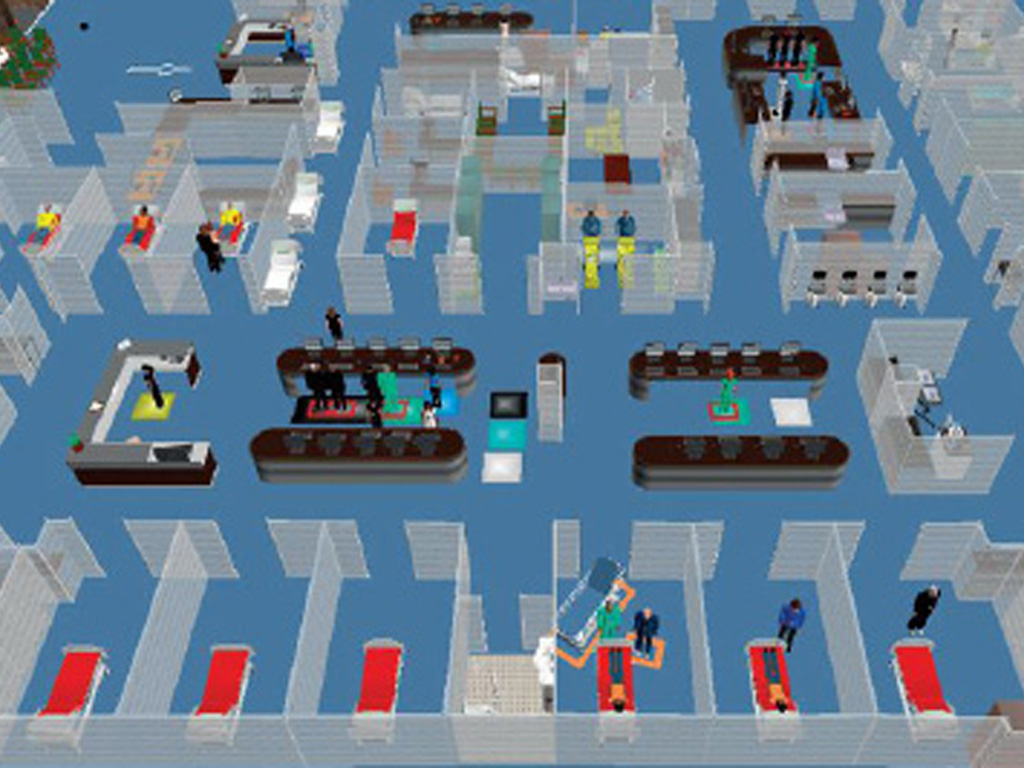
Improving Management of Rapidly Deteriorating Pediatric Patients
Response to deteriorating patients is critically important for patient safety and a significant marker of quality of care. Professional efforts to improve this response have focused on the recognition of patient deterioration (afferent limb) and the subsequent escalation of care, often involving Medical Emergency Teams (MET defferent limb).
Case Study Details
Computer Simulation Model
- Door to Nurse time: 65 minutes, 16% improvement
- Door to Doc time: 53 minutes, 30% improvement
- Patient Length of Stay: 273 minutes 12% improvement
Actual Change after implementation
- Door to Nurse time: 64 minutes, 17% improvement
- Door to Doc time: 40 minutes, 47% improvement
- Patient Length of Stay: 281 minutes 9% improvement
32% increase in Patient Satisfaction
9% increase in Patient Capacity
Better employee morale
Build a computer model to simulate core operational elements within the ED
- allow staff to modify processes and procedures to improve operations and predict results
- allow staff to compare different models and adjust to optimize operational flow
- includes floor plan changes, staffing support required, and comparison with actual outcomes
In process of gathering this information
- Estimating: Did not exceed budget allocated for ED improvements
3 Years
- 1 year to develop and validate computer model matched actual data
- 2 to 3 weeks to run computer simulations
- 1 year to run various simulations to test and optimize models
- 1 year to capture performance data after implementation of changes
In process of getting this information
- Estimating
- Existing Staff Participation
- Consultant to build computer model and perform data collection of actual metrics
- Door to Nurse time: 77 minutes
- Door to Doctor time: 76 minutes
- Patient Length of Stay: 309 minutes
- Less than optimal management of ED patients
- Less than optimal management of deteriorating patients
- limiting the teams ability to treat 9% more patients
Decision Maker Talking Points
- 32% increase in Patient Satisfaction
- 9% increase in Patient Capacity translates into 9% potential increase in Revenue
- Shorter Patient LOS (9%)
- Better patient care for community, be able to serve more people with same resources
- Increased retention of staff with better employee morale
- 9% Reduction in length of stay in the ED
- 32% increase in Patient Satisfaction supports higher reimbursement rate
- better employee morale translates into lower turnover and lower staff highering and training costs
- 9% Reduction in length of stay in the ED
- 47% improvement in Door to Doc time
- 17% improvement in Door to Nurse time
- 9% increase in patient capacity within the ED
- better employee morale translates into lower turnover and lower staff hiring and training costs
- need to train medical students with evidence based best practices
- need to have medical students training in an IPE environment to best prepare for current needs in Hospitals
- have students prepared to operate in high risk, time pressured critical environments
- better preparing the medical students given limitations on clinical hours
- practicing in a simulated environment instead of on actual patients
- need to train nursing students with evidence based best practices
- need to have nursing students training in an IPE environment to best prepare for current needs in Hospitals
- better preparing the nursing students given limitations access to clinical placements
- practicing in a simulated environment instead of on actual patients
- Better efficiency in the care of patients with the most common problems
- increase the ability of staff to treat more patients
- ability to retain staffing by showing value for patient satisfaction
- ability to better adjust behavior as teams train together
- making the case will involve a fully engaged staff of passionate educators
- make clear that faculty educators must be trained to conduct deliberate practice and feedback
- support a part of the institutions patient safey initiative to align with mission focus
- focus on capturing the appropriate ROI metrics for you environment
